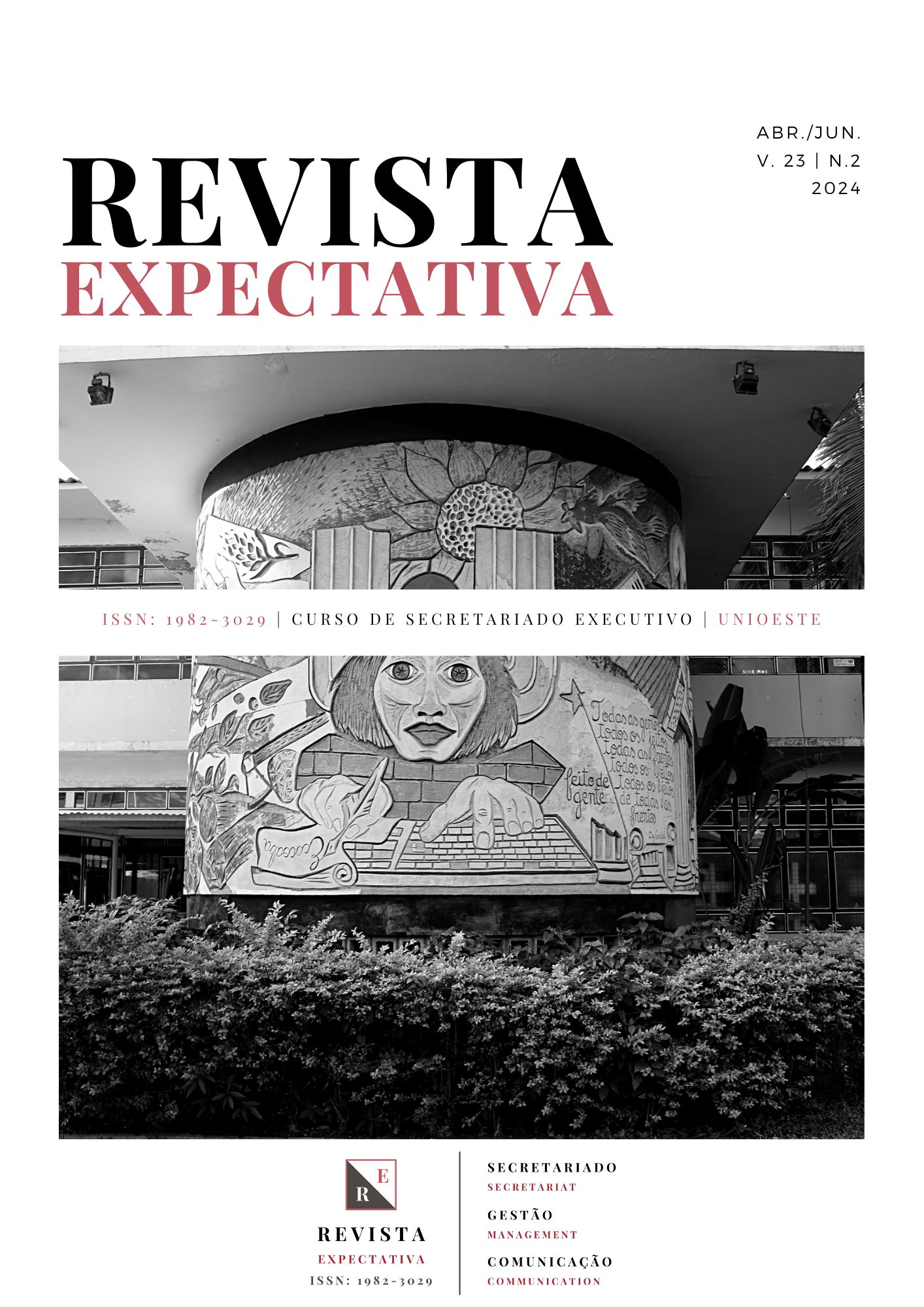Insights para um modelo integrado de vantagem competitiva sustentável
DOI:
https://doi.org/10.48075/revex.v23i2.32878Palavras-chave:
Vantagem Competitiva Susten´tavel, Modelo VRIS, Modelo de Pedras AngularesResumo
Os modelos VRIS (Barney, 1991) e Pedras Angulares (Peteraf, 1993) são bases importantes para compreender, por meio da RBV “pura”, as condições para que as empresas desenvolvam vantagem competitiva sustentável. Este artigo teórico possui o objetivo de discutir, teoricamente, insights para uma futura unificação dos modelos, não esgotando discussões ou limitando novas contribuições. Com isso, seis pontos teóricos dos modelos foram pontuados, identificando pontos comuns (heterogeneidade, modelo estratégico, nível de análise de recursos, aplicação dos modelos e análise econômica) e divergente (mecanismos de imitabilidade). O esforço maior foi argumentar, teoricamente, a fim de aproximar o ponto divergente e estabelecer uma visão para um modelo próspero de integração, com possibilidades de aplicação empírica. Como resultado da discussão teórica, observa possibilidades emergentes futuras para combinar elementos para um modelo de vantagem competitiva sustentável.
Referências
BARNEY, J. Firm resources and sustained competitive advantage. Journal of Management, v. 17, n. 01, p. 99-120, 1991.
BARNEY, J. B.; HESTERLY, W. S. Administração estratégica e vantagem competitiva. São Paulo: Pearson Prentice Hall, 2008
BARNEY, J. B.; MCWILLIAMS, A.; TURK, T. On the relevance of the concept of entry barriers in the theory of competitive strategy. In: Annual Meeting of the Strategic Management Society, San Francisco, 1989.
BARZEL, Y. Organizational forms and measurement costs. Journal of Institutional and Theoretical Economics, 161, p. 357–373, 2005.
COASE, R. H. The Institutional structure of production. University of Chicago Law Occasional Paper, n. 28, 1992.
DIERICKX, I.; COOL, K. Asset Stock Accumulation and sustainability of competitive advantage. Management Science, v. 35, p. 1504-1511, 1989.
FOSS, K.; FOSS, N. J. The next step in the evolution of the RBV: integration with transaction cost economics. Management Review, Working Paper, 4, 2004.
FOSS, N. J. The resource-based view: aligning strategy and competitive equilibrium. In: FOSS, N. J. Strategy, Economic Organization, and the Knowledge Economy: the coordination of firms and resources. Oxford University Press, p. 61-80, 2005.
FOSS, N. J.; KNUDSEN, T. The resource-based tangle: towards a sustainable explanation of competitive advantage. Managerial and Decision Economics, v. 24, p. 291-307, 2003.
GHEMAWAT, P. Sustainable Advantage. Harvard Business Review, v. 64, p. 53-58, 1986.
GOHR, F. C.; SANTOS, L. C.; BURIN, C. B.; MARQUES, M. S.; ARAI, R. M. Recursos estratégicos e vantagem competitiva: aplicação do modelo VRIO em uma organização do setor sucroalcooleiro. Revista Gestão Organizacional, v.4, n.1, p.49-70, 2011.
GONÇALVES, C. A.; COELHO, M. F.; SOUZA, E. M. VRIO: Vantagem competitiva sustentável pela organização. Revista Ciências da Administração, v. 17, n. 3, p. 819-855, 2011.
GRIMM, C.; SMITH, K. Strategy as action: industry rivalry and coordination. Cincinnati, OH, South-Western College Publishing, 1997.
HART, S. L. A natural-resource-based view of the firm. Academy Management Review, v. 20, n. 4, p. 986-1014, 1995.
HOFFMAN, V. E.; LEONELO, A. M.; DIAS, C. N.; MATIAS, I. Recursos estratégicos para vantagem competitiva em food trucks. Revista Alcance, v. 23, n. 3, p. 352-371, 2016.
IRELAND, R. D., HITT, M. A., SIRMON, D. G. A model of strategic entrepreneurship: the construct and its dimensions. Journal of Management, v. 29, n. 6, p. 963–989, 2003.
LIPPMAN, S. A.; RUMELT, R. P. Uncertain imitability: an analysis of interfirm differences in efficiency under competition. The Bell Journal of Economics, n. 13, p. 418-438, 1982.
PENROSE, E. The theory of the growth of the firm. Basil Blackwell, Oxford, 1959.
PETERAF, M. A. The cornerstone of competitive advantage: the resource-based view. Strategic Management Journal, v. 14, n. 3, p. 179-191, 1993.
PETERAF, M.A; BARNEY, J. B. Unraveling the resource-based tangle. Managerial and Decision Economics, n. 24, p. 309-323, 2003.
PORTER, M. E. Competitive strategy: techniques for analysing industries and competitors. New York: Free Press, 1980.
RUMELT, R. P. Towards a strategic theory of the firm. Competitive Strategic Management, v. 26, p. 556-570, 1984.
TEECE, D. J. Profiting from technological innovation: Implications for integration, collaboration, licensing and public policy. Research Policy, v. 15, n. 6, p. 285-305, 1986.
TEECE, D. J.; PISANO, G.; & SHUEN, A. Dynamic capabilities and strategic management. Strategic Management Journal, v. 18, n. 7, p. 509-533, 1997.
WILLIAMSON, O. The economic institutions of capitalism. New York: Free Press, 1985.
Downloads
Publicado
Como Citar
Edição
Seção
Licença
Copyright (c) 2024 Revista Expectativa

Este trabalho está licenciado sob uma licença Creative Commons Attribution-NonCommercial-ShareAlike 4.0 International License.
Aviso de Direito Autoral Creative Commons
Política para Periódicos de Acesso Livre
Autores que publicam nesta revista concordam com os seguintes termos:
1. Autores mantém os direitos autorais e concedem à revista o direito de primeira publicação, com o trabalho simultaneamente licenciado sob a Licença Creative Commons Attribution que permite o compartilhamento do trabalho com reconhecimento da autoria e publicação inicial nesta revista.2. Autores têm autorização para assumir contratos adicionais separadamente, para distribuição não-exclusiva da versão do trabalho publicada nesta revista (ex.: publicar em repositório institucional ou como capítulo de livro), com reconhecimento de autoria e publicação inicial nesta revista.
3. Autores têm permissão e são estimulados a publicar e distribuir seu trabalho online (ex.: em repositórios institucionais ou na sua página pessoal) a qualquer ponto antes ou durante o processo editorial, já que isso pode gerar alterações produtivas, bem como aumentar o impacto e a citação do trabalho publicado (Veja O Efeito do Acesso Livre).
Licença Creative Commons
Esta obra está licenciada com uma Licença Creative Commons Atribuição-NãoComercial-CompartilhaIgual 4.0 Internacional, o que permite compartilhar, copiar, distribuir, exibir, reproduzir, a totalidade ou partes desde que não tenha objetivo comercial e sejam citados os autores e a fonte.


